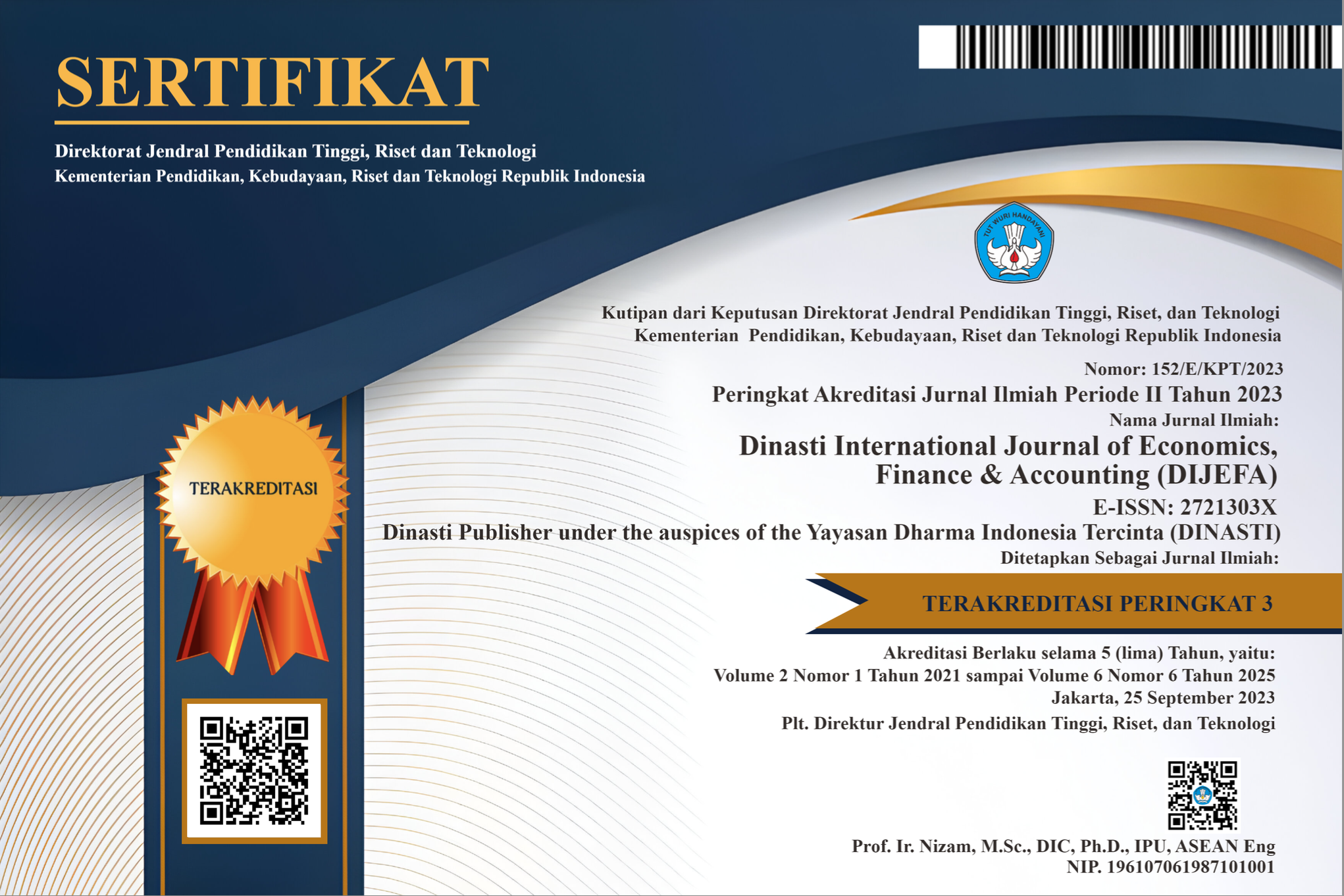Impact Of Remittances On Foreign Currency Supply In Developing Economies: A Case Of Zimbabwe From 2009 to 2022
DOI:
https://doi.org/10.38035/dijefa.v5i5.3446Keywords:
remittances, foreign currency, Zimbabwe, developing economiesAbstract
The study investigates the impact of remittances on the foreign currency supply in Zimbabwe from 2009 to 2022. The analysis focuses on understanding how remittance inflows have contributed to the availability of foreign currency in the Zimbabwean economy, considering the economic challenges the country has faced, including hyperinflation, currency devaluation, and economic instability. The Ordinary Least Squares (OLS) regression method was employed to analyse Zimbabwe’s relationship between remittances and foreign currency supply. The study uses annual data from 2009 to 2022. The OLS regression results indicate a significant positive relationship between Zimbabwe’s remittances and foreign currency supply. The analysis reveals that remittances have been a crucial foreign currency source, helping stabilise the economy during economic turmoil. Additionally, exchange rates and GDP significantly impact the foreign currency supply. The findings underscore remittances’ vital role in enhancing Zimbabwe’s foreign currency supply. Given the economic instability in the country, remittances have served as a reliable and stable source of foreign exchange, which is critical for sustaining economic activities. This study contributes to the literature on remittances and their economic impact by providing empirical evidence from Zimbabwe. It highlights the importance of fostering policies encouraging remittance inflows, which can significantly stabilise foreign currency supply in developing economies facing economic challenges.
References
Adediyan, Aderopo R. (2020): Determinants of money supply in Nigeria, CBN Journal of Applied Statistics, ISSN 2476-8472, The Central Bank of Nigeria, Abuja, Vol. 11, Iss. 2, pp. 181-199.
Alawneh, A. (2020), Relationship between Workers’ remittance and money supply from 2000 to 2018: Using the Vector Autoregression model: International Journal of Business and Management, 15 (2), 1833-3850.
Amuedo-Dorantes, C., & Pozo, S. (2004). Workers’ remittances and the real exchange rate: A paradox of gifts. World Development, 32(8), 1407–1417.
Awe, A. (2013), The impact of Foreign direct investment on economic growth in Nigeria: Journal of Economic and Sustainable Development, 4(2), 2222-2855.
Dahal, S (2022), Effect of remittances on the macroeconomy: A structural VAR study of Nepal, CAMA Working 43/2022.
Foday and Sheriff (2021) Impact of Remittance flow on the real effective exchange rate: empirical evidence in Gambia MRPA no 106045
Hassan, G. M., & Holmes, M. J. (2013). Remittances and the real effective exchange rate. Applied Economics, 45(35), 4959–4970.
IMF, 2022, Sixth Edition of the IMF’s Balance of Payments and International.
Keefe, H. G. (2014). The impact of remittances on exchange rate volatility and inflation volatility in dollarised economies (Working Papers).
Molapo, S (2020). Determinants of Remittance in Selected Southern African Countries: MEFMI 2022.
Monetary Policy Statement Report 2023.
Mongardini, J., & Rayner, B. (2009). Grants, remittances, and the equilibrium real exchange rate in Sub-Saharan African countries. (IMF Working Papers 09/75). Washington, DC: International Monetary Fund.
Truen. S, Jisting. W, Kgaphola (2016), The impact of remittance in Lesotho, Malawi and Zimbabwe.
World Bank (2019). Migration and Development Brief 31. Technical Report The World Bank.
World Bank. (2022a). Remittances Prices Worldwide Quarterly. An Analysis of Trends in Cost of Remittance Services. The World Bank.
Downloads
Published
How to Cite
Issue
Section
License
Copyright (c) 2024 Collin Chikwira

This work is licensed under a Creative Commons Attribution 4.0 International License.
Authors who publish their manuscripts in this journal agree to the following conditions:
- The copyright on each article belongs to the author(s).
- The author acknowledges that the Dinasti International Journal of Economics, Finance & Accounting (DIJEFA) has the right to be the first to publish with a Creative Commons Attribution 4.0 International license (Attribution 4.0 International (CC BY 4.0).
- Authors can submit articles separately, arrange for the non-exclusive distribution of manuscripts that have been published in this journal into other versions (e.g., sent to the author's institutional repository, publication into books, etc.), by acknowledging that the manuscript has been published for the first time in the Dinasti International Journal of Economics, Finance & Accounting (DIJEFA).


























































